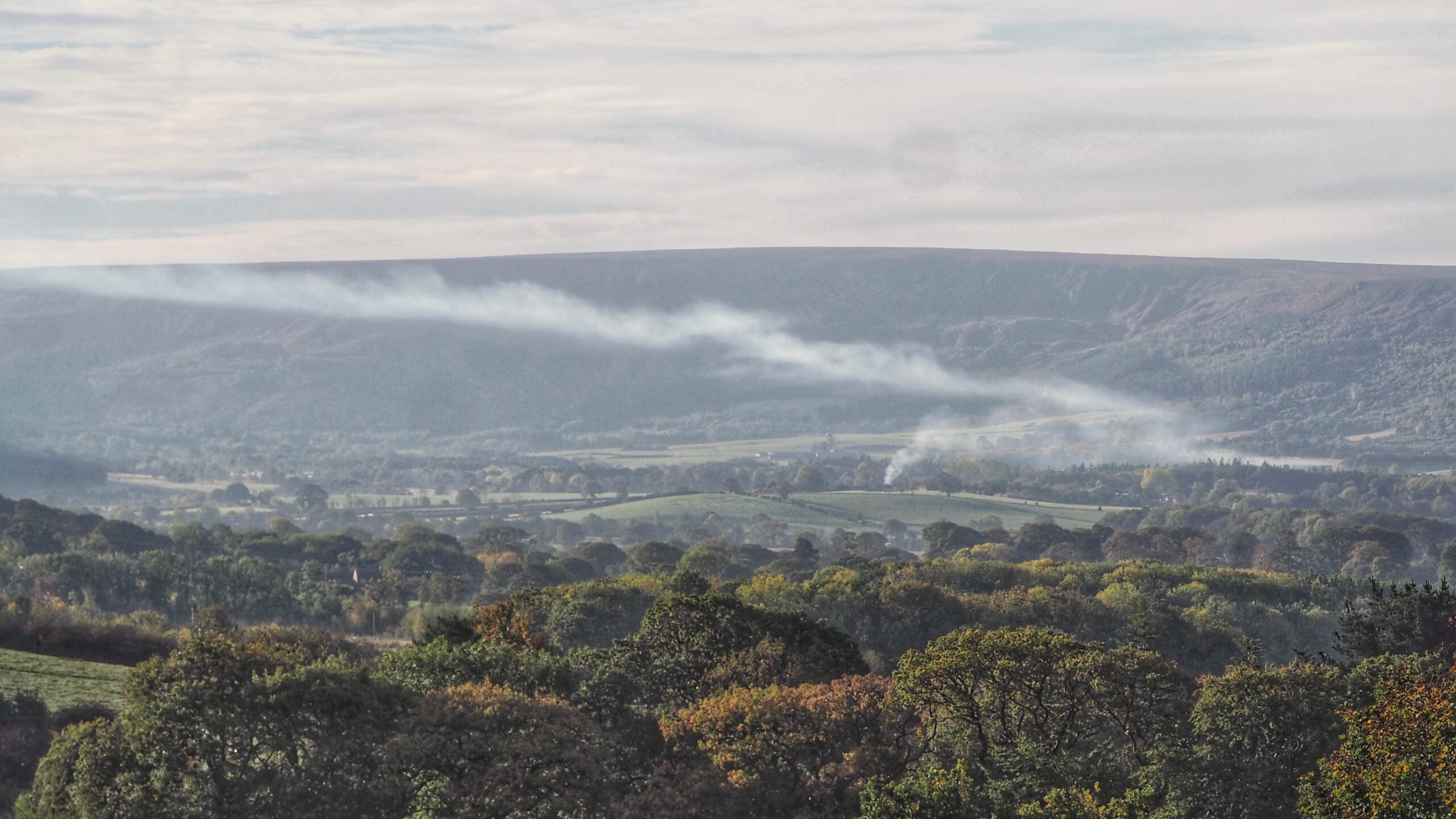A familiar landscape, yet on a still autumnal day in the Vale of Cleveland, when not a single turbine blade so much as twitches, an unexpected sight smudges the view. A solitary plume of smoke twists into the air, unsettling in its beauty, creating a scene both ordinary and strangely unfamiliar.
At first glance, it seems to rise from deep within the valley, somewhere near Ingleby Greenhow—if my eyes have not deceived me. That faint high ground before its source I reckon is Stone Stoup Hill. Look closely and a mystery unfolds: at lower levels, the smoke drifts westward, yet higher up it bends back towards the east, drawn into invisible hands that move in opposing directions.
Here, trapped by the contours of the Cleveland Hills and the sweep of Greenhow Botton, the valley floor becomes a corridor for slow, shifting air. The hot smoke, lighter than its surroundings, climbs until it crosses an invisible boundary—where the air above belongs to another world entirely. Here, higher breezes from the west seize it and carry it off, marking a moment where nature’s order seems to hesitate.
This subtle twisting, this graceful distortion in the rising column, is the mark of wind shear: a clash of air layers where speed and direction change sharply in the space of a few dozen metres. In the Cleveland Hills, such battles must be common, born from the terrain’s restless influence—dales that funnel the wind, hills that deflect it, and the silent play of pressure that shape the clouds. The plume’s strange bend, probably a spiral, is more than a curiosity; it is a fleeting trace of the complex meteorological forces that are at work on even the calmest days.

Leave a Reply